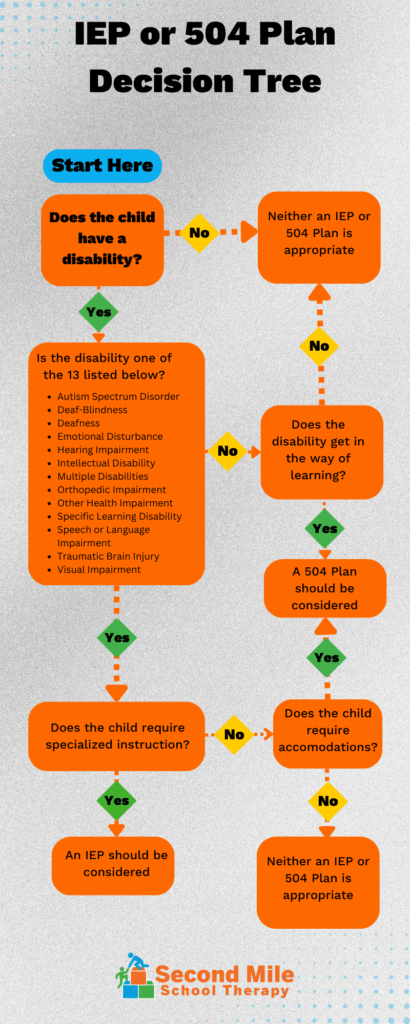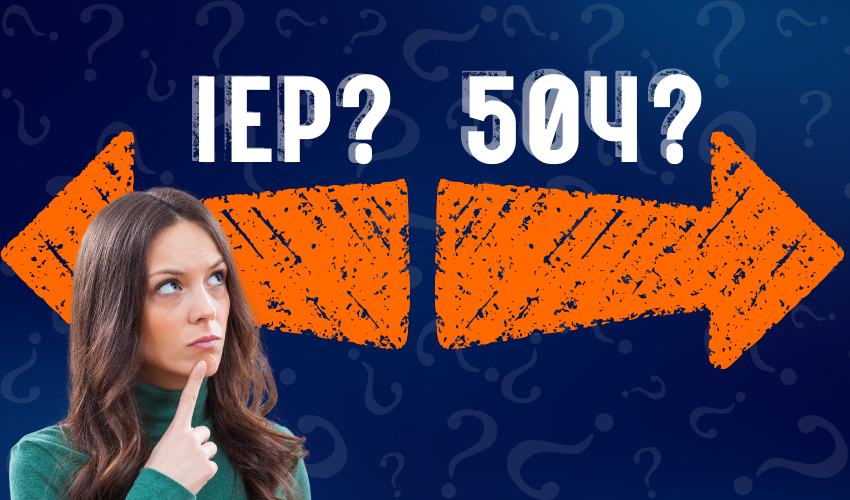If you’re a special education director, chances are you’ve asked (or been asked), “Does this student need an IEP or a 504 Plan?” And honestly, it’s a fair question — one that doesn’t always come with a clear-cut answer.
Even veteran educators get tripped up by the differences between an IEP and a 504, especially when a student doesn’t fit neatly into a box. Let’s break it down so it’s actually usable — and not just legal jargon pulled from a dusty policy manual.
What’s the Real Difference?
Here’s the quick version:
- IEP = Special Education + Services + Goals
- 504 Plan = General Ed + Accommodations
But there’s more to it than that. These two plans come from completely different laws:
- IEPs fall under IDEA (Individuals with Disabilities Education Act).
- 504 Plans come from Section 504 of the Rehabilitation Act, a civil rights law.
So yes, they both support students with disabilities — but they do it in different ways, and the why behind them matters.
The Most Common Confusions We See (And What to Do Instead)
- “Can we just give them a 504 instead of an IEP?”
If the student needs specialized instruction to learn (not just classroom accommodations), it’s not a 504 Plan. It’s an IEP situation.
- “Don’t we have to write IEPs, but not 504s?”
Technically, no written 504 Plan is required by law. But try running a school that way. DESE strongly recommends documenting 504s. If it’s not written, it doesn’t exist when parents or attorneys ask questions.
- “Can a 504 include speech, OT, or PT?”
Yep. It can — though it’s less common. The law doesn’t prohibit related services under 504. Just document the need and make it clear.
- “Are parents supposed to be invited to 504 meetings?”
Again — technically no. But do you really want to explain to a parent that their child’s plan was written without them in the room? Always invite them. Always.
- “Do 504 kids get discipline protections like IEP kids?”
Yes. After 10 cumulative days of suspension, you need to hold a manifestation determination, just like you would with an IEP.
Use This Decision Tree

Not sure which route to go? Use this updated decision tree below (you can download it, print it, share it, and keep it at your desk). It’ll walk your team through the exact questions you should be asking before you ever check the “IEP” or “504” box.
Bottom Line
If a student can be successful in the general education setting with only accommodations, a 504 Plan may be the right fit.
If the student needs specialized instruction or modified curriculum, an IEP should be considered.
And if the student doesn’t need either — then don’t force a plan just to have one. Sometimes support can come from Tier 2 interventions, behavior plans, or classroom strategies without labeling it.
Final Word
We all want to do what’s best for students — and we also want to stay compliant. When in doubt, involve your building special education team, and document the discussion. Then revisit the student’s needs regularly.
It’s not about choosing the easiest plan — it’s about choosing the right one.




